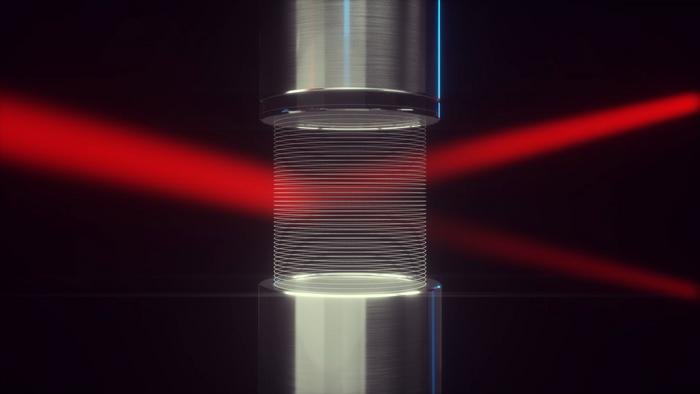Laser Beams Deflected Off of Nothing but Air for First Time Ever in Breakthrough Patent Pending Process - The Debrief::An international team of scientists report that they have successfully used acoustics to deflect laser beams in an engineering first.



In an ultrasonic frequency we can’t hear. But your pets and any nearby bats or rodents etc may be upset by it…
Can’t hear but still cause damage?
Yes. Industrial grade ultrasonic sensors are harmful to your health. They can be used, for example, to measure the water level in a tank. If you need to enter a place like that, you should physically disconnect the sensor first. You might not hear much of the noise, but you may feel it in your teeth or some other places.
Weren’t there some huge high power sonars that could melt people to goo?
I didn’t know the answer to this so I looked it up - yes. Over 120 Db can cause damage even if it’s ultrasonic and you can’t hear it. Apparently at 155Db the heat created by the sound wave can be dangerous as well.
Just a small note, it’s written dB, small “d”, big “B”.
“B” is the unit symbol for bel and “d” is the symbol for the SI prefix deci, a tenth.
In that case can we use just B. MB, etc.
Oh yes, sure you can, 140 dB is 0.000014 MB. The confusing thing is just that the non-SI unit byte also uses the symbol “B” and uses the SI prefix “M” quite often.
Sometimes when I calculate optical power levels I actually use B in between. For example:
How much signal is 88 optical channels at 1.6 dBm of power each?
0 dBm = 1 mW by definition
1.6 dB = 0.16 B = log10 ( x ) --> x = 10 ^ 0.16 = 1.45
So 1.6 dBm is 1.45 * 1 mW = 1.45 mW
Then 88 channels is 88 * 1.45 mW = 127.60 mW = 127.60 * 1 mW
log10(127.60) = 2.11 B = 21.1 dB
So 127.20 mW is 21.1 dBm, just below the output specification of our amplifier, good, nothing should melt.